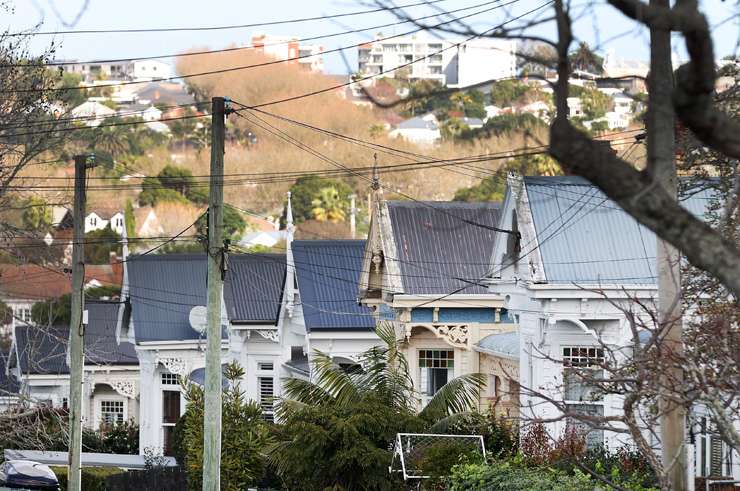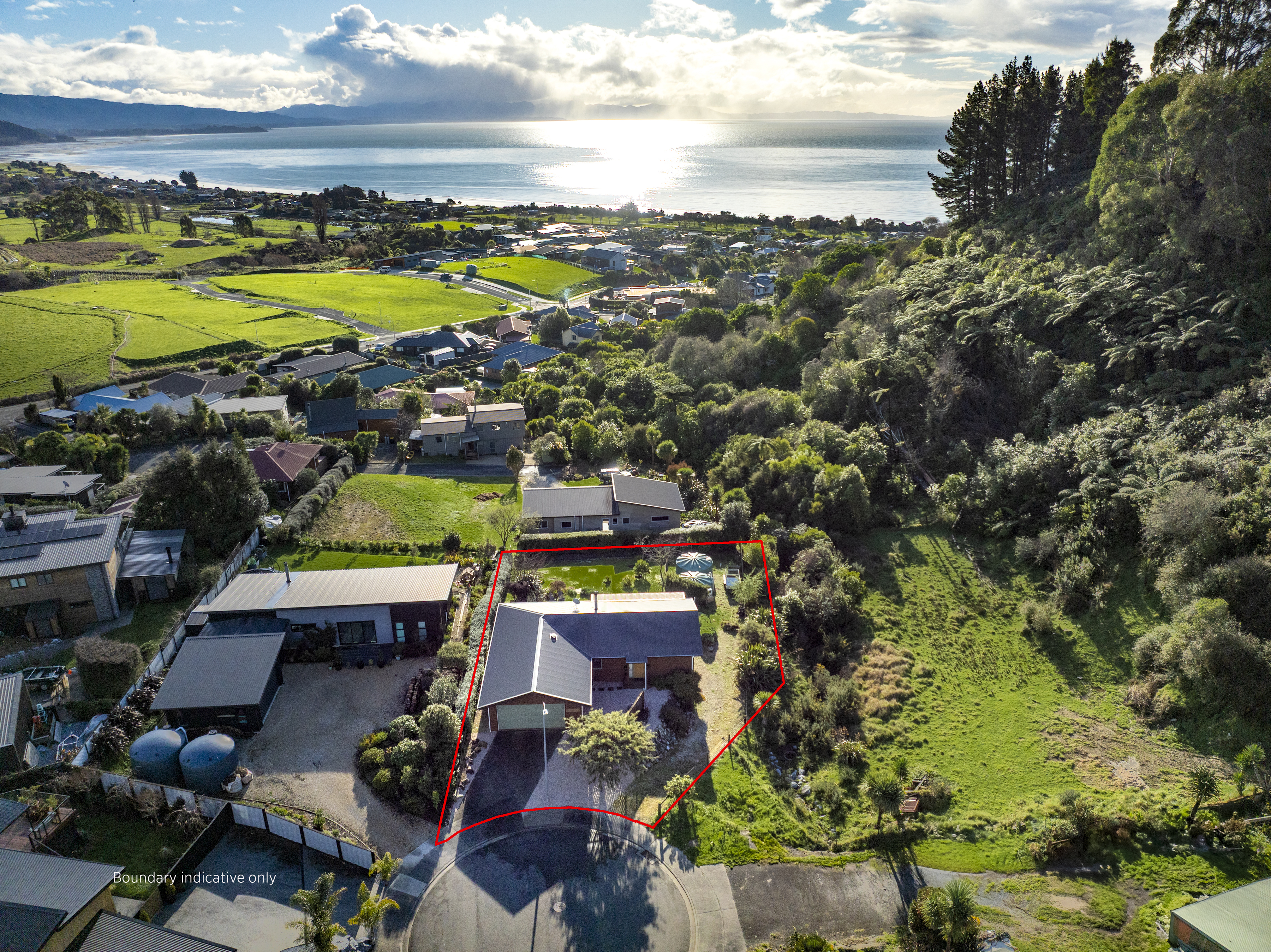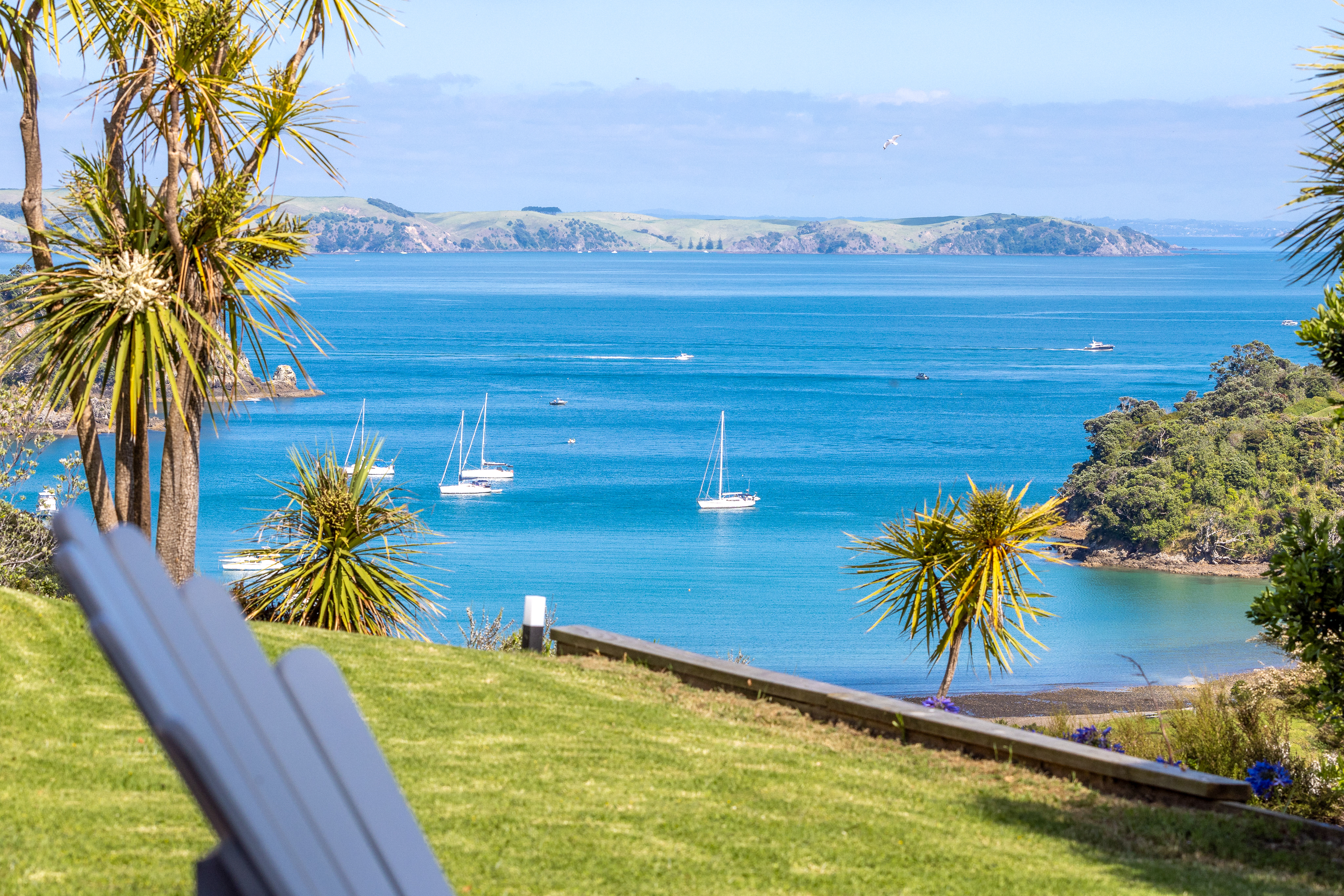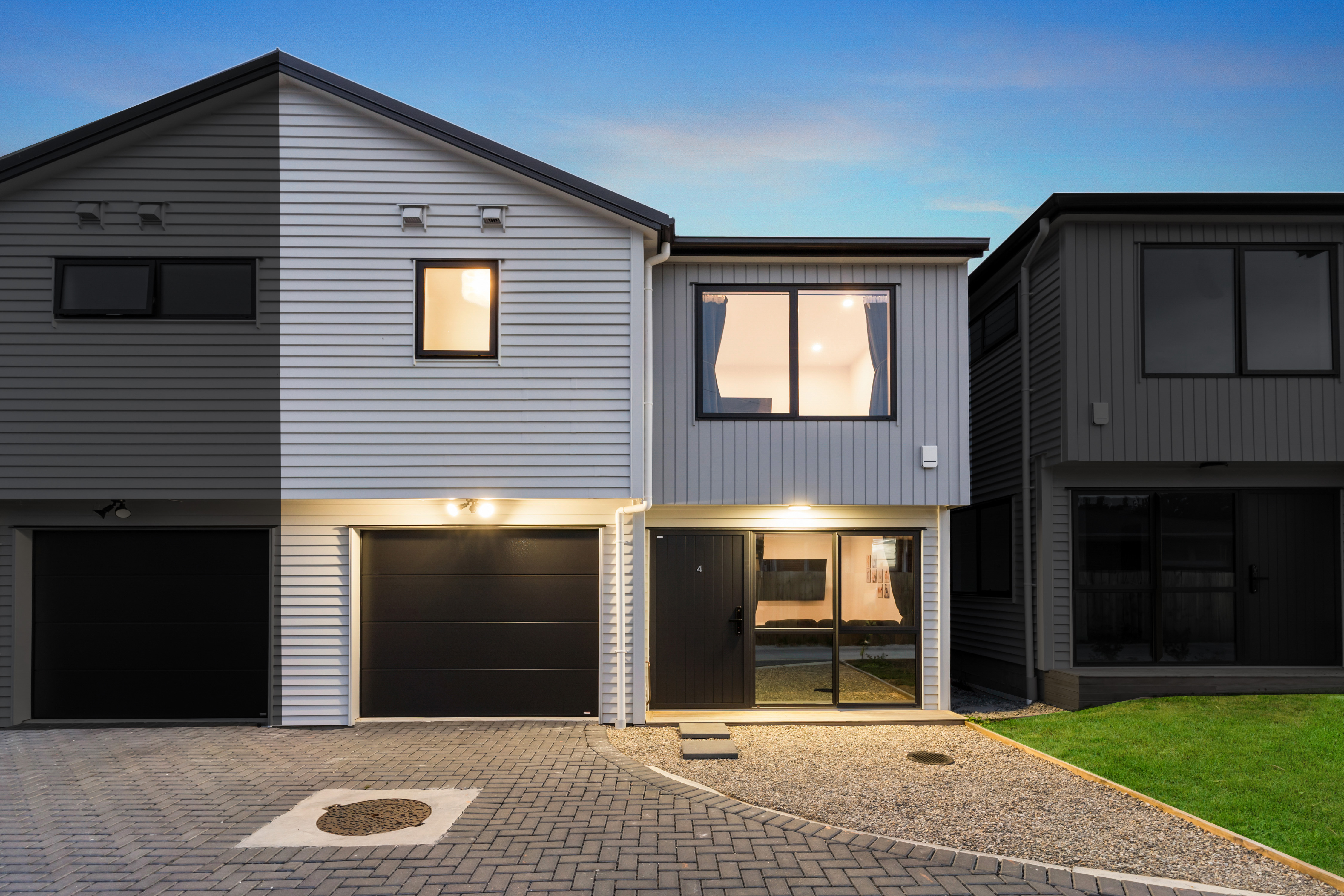Click here to download the report >
The housing market slump has cost homeowners in the country's capital almost $200,000, the latest OneRoof-Valocity house value report shows.
The average property value in Wellington tumbled just over $196,000 (17.7%) to $1.103 million since peaking in March.
Property values in the capital have suffered the country's steepest dollar decline as buyers have retreated from the market against a backdrop of rising interest rates and worsening inflation.
Start your property search
Homeowners in neighbouring Lower and Upper Hutt also suffered steep declines, of $158,000 (18.7%) and $149,00 (17.5%), while property values in Auckland fell $140,549 (9.8%) since peaking at $1.56m at the start of the year.
The nationwide average property value fell just over $75,000 (6.8%) after hitting a high of $1.09m at the end of February.
Escaping the downturn relatively unscathed were homeowners in Queenstown-Lakes, with the average property value in the wealthy tourist town sliding just $21,325 (1.1%) since reaching an all-time high of $1.88m in July.
Property values in Christchurch dropped $24,779 (3.1%) since market peak in June, while values in Tauranga, Hamilton and Dunedin fell $92,000, $68,000 and $63,000 respectively from their market peak.
Of the 645 major metro suburbs with 20 or more settled sales in the past 12 months, only 24 are still registering value growth, the majority of which are in Queenstown-Lakes.
Sixteen suburbs - mostly in Wellington and Auckland - saw value drops of more than $300,000 since market peak. The suburb that took biggest hit was Okura, a lifestyle suburb on Auckland's northern fringe. Its average property value has fallen $426,000 since market peak.
The average property value in Herne Bay, New Zealand's most expensive suburb, took the next biggest tumble since peak, falling $355,000 to $3.835m.
Figures from the latest OneRoof Valocity House Value Index show continued declines in 15 of the country's 16 regions over the past three months.
New Zealand's average property value dropped 3.7% to $1.023m in the last three months, while year on year growth was a mere 0.7%.
Only West Coast, New Zealand's cheapest housing market, recorded value growth in the three months to the end of September, but the 0.5% rise to $407,000 shows the market slump is putting the squeeze on house values there too.
The biggest three-month declines were in Greater Wellington (-7.3%); Nelson (-5.7%) and Manawatu-Whanganui (-5.4%). Auckland's average property value fell 4% over the same period - and registered its first annual decline since July 2011, when values slid just under 1%.
Auckland property values were down 1.9% year on year - a drop $27,000. Also down year on year were: Wellington (-9.4%); Manawatu-Whanganui (-2%); Nelson (-1.3%) and Hawke's Bay (-0.1%).
James Wilson, head of valuations at Valocity, OneRoof's data partner, said: "Greater Wellington remains the country's most troubled housing market. Property values dropped in all eight of the region's territorial local authorities (TLAs) over the quarter, and homes in the capital are now worth $99,000 less than what they were a year ago.
"Cost of living pressures and strong signals from the Reserve Bank that further interest rate rises are on the cards have dampened buyer enthusiasm, and as long as supply continues to outpace demand, price growth is unlikely to return anytime soon.
"Continued falls over the quarter suggest the market hasn't hit the bottom yet."
Wilson said that some smaller centres, where prices remain relatively low, were still seeing positive growth. "Property values in Kaikoura, Opotiki, Westland, Thames-Coromandel and Hurunui were all up over the quarter. Some of these areas are popular among buyers seeking holiday homes, which bodes well for them as we head into spring and summer," he said.

Valocity head of valuation James Wilson: "Continued falls over the quarter suggest the market hasn't hit the bottom yet." Photo / Fiona Goodall
The number of settled sales fell from 95,455 in the 12 months to end of August to 93,847 in the 12 months to the end of September, while new listings have tracked behind levels in 2019 and 2020. OneRoof editor Owen Vaughan said: "Properties are taking longer to sell in the current climate, which has placed pressure on movers.
"Owners looking to list will understandably be nervous about where their property sits in the market right now and what method of sale they should choose. While auction clearance rates for 2022 are well down on the year before, when demand was at its peak, feedback from agencies highlights that auctions are still securing better and quicker results than other sales methods."
Wayne Shum, head of research at Valocity, said that the number of mortgage registrations fell from just 6100 in July to just over 5300 in August - the lowest level since August 2021 when the country was thrust back into a hard lockdown following the outbreak of the Delta strain of Covid-19.
"First home buyers were hit hard by the lending landscape and their share of market declined from over 40% pre-Christmas 2021 to 36.7% in March. However, lower property prices have helped first home buyers’ share recover to 39.7% in August this year," he said.
Approximately 55% of mortgage holders who bought in the second half of 2020 and first half of 2021 are soon set to come off the low interest rates in the next 12 months and on to higher rates, which will reduce their spending power.
"The Reserve Bank increased the OCR by 0.5 percentage points in August, and is likely to do so again on October 5 and in November, in a bid to push down inflation, which is running at 7.3%.
"Rental growth has stalled as interest rates continue to rise, which places greater cash-flow pressure on some investors. There is also an oversupply of some types of rental properties, which means rents are unable to be increased to cover shortfalls. Furthermore, it is more difficult to obtain interest-only mortgages, which some investors have previously relied on."
Wilson said that rising construction costs and worsening supply chain issues would also have an impact on the market. "Some developers will struggle to complete construction works due to labour and materials shortages, and rising costs of materials and borrowing. Sunset clauses may need to be exercised to cancel pre-sales contracts in these instances," he said.
"However, New Zealand’s economy is in good shape and that, coupled with low unemployment levels, should bolster the property market."
Key points
New Zealand’s average property value is close to registering its first annual decline since July 2011, when it dropped 0.9%. Value growth in the 12 months to the end of September this year was just 0.7% ($7000). The nationwide average property has been in a steady decline since peaking at $1.098 million at the end of February, with a 3.2% drop in the three months to the end of September taking it to $1.023m. At the current rate of decline, the nationwide average property value will be below the magic $1m mark by the end of December.
Just one region, West Coast, registered growth in the three months to the end of September, but the modest bump of 0.5% ($2000) indicates it will be joining the rest New Zealand in the red either next month or the month after. Wellington region is suffering the country biggest house price headache, but the 7.3% decline, while still a worry, is lower than the 9.1% decline recorded in the three months to the end of August.
Of the country’s 72 territorial local authorities, 13 saw value growth over the three months to the end of September. The biggest growth spurts were in Kaikoura (+6.3%), Opotiki (+5.9%), Westland (+2.9) and Thames-Coromandel (+2.8%), but growth levels in all four were down on the three months to the end of August, which suggests there a fair bit of volatility in these markets.
Hauraki was at the bottom of the heap, with its average property value down 13.4% ($120,000) over the quarter.
Nationwide sales volumes fell from 95,455 in the 12 months to the end of August to 93,847 in the 12 months to the end of September. Of the 2265 suburbs where there was sales activity in the last 12 months, just 914 recorded 20 or more settled sales, down from 936 in the 12 months to the end of August and down from 1012 in the 12 months to the end of March.
* The figures cited below only cover suburbs with 20-plus settled sales in the last 12 months.
NZ’s most expensive
Herne Bay is New Zealand’s most expensive residential suburb, but the downturn has put the squeeze on house prices in the wealthy Auckland enclave. The average property value in the suburb is only 1.1% ahead of where it was a year ago, and a quarterly slide of 4% saw it fall $161,000 to $3.835m. The most expensive suburb outside of Auckland is Queenstown-Lakes' Kelvin Heights (down 1.3% over the quarter to $2.536m).

Houses in Herne Bay, Auckland. the suburb's average property value fell 4% in the three months to the end of September. Photo / Fiona Goodall
Forty-two suburbs with 20 or more settled sales in the last 12 months have an average property value of $2m or more - down from 47 in the 12 months to the end of August. Of the current crop of $2m-plus suburbs, just five saw value growth over the quarter, and 17 are in a worse position now than they were a year ago.
NZ’s cheapest
Runanga, in Grey, retains its crown as New Zealand's cheapest place to buy, with the town's average property value sitting at $235,000. Value growth over the quarter was 2.2%, adding $5000 to the price of a typical home there. While the property boom hasn’t added hundreds of thousands of dollars to the value of Runanga homes, residents who bought 12 months ago are sitting on a tidy $30,000 gain. Just three other towns and suburbs have an average property value of less than $300,000: Mataura, in Gore ($246,000); Cobden, in Grey ($250,000); and Blaketown, also in Grey ($265,000). House price growth in Kaitangata, in Clutha, pushed up the town's average property value $5000 over the quarter to $300,000 for first time.
Of the 72 suburbs with an average property value of less than $500,000, 57 experienced value declines over the quarter. The downturn has also widened the pool of “cheap” suburbs in the country’s biggest city, with the number of Auckland suburbs with an average property value of less than $1m up from 24 last month to 28 now.
In demand
Kaikoura Flat, in Kaikoura, Canterbury, once again recorded the strongest three-month growth, with the suburb’s average property value up 14.8% to $886,000. Double-digit growth could also be found in Onewhero (+11.8%), Meremere (+11.5%), and Pukekawa (+11.3%), all in Waikato, as well as Kaikoura (+10.4%), in Canterbury.
The overall number of growth suburbs dropped from 157 in August to 94 in September - 10% of suburbs that recorded 20 or more settled sales in the last 12 months and just 3% of all suburbs.
Outside of Queenstown-Lakes and Christchurch, heat in the major metros is becoming harder to find. No suburb in Dunedin, Tauranga or Wellington recorded value growth over the quarter. Bader was Hamilton's sole growth suburb - although its average property value was up only 0.2% - while Coatesville (+1.2%), Great Barrier Island-Aotea Island (+1%) and Remuera (0.1%) were the only Auckland suburbs to avoid losses or zero growth.
Pukekawa enjoyed the biggest dollar gain over the quarter, with its average property value rising $124,000 to $1.223m.
Falling fast
Ngatea, in Hauraki, Waikato, suffered the country's biggest house price plunge over the quarter, with its average property value falling 17.5% ($158,000) to $745,000, although year on year it is still up 13.7%. Another 57 suburbs, mostly in Greater Wellington, saw double-digit declines over the quarter. The suburb that lost the most dollars was Totara Park, in Auckland's Manukau district, with its average property value dropping $337,000 over the quarter to $2.47m. The average property value in 313 suburbs, a third of the total covered, is lower now than what it was a year ago, with Roseneath, in Wellington, suffering the biggest dollar drop year on year - a decline of $304,000 to $1.637m. Every suburb in the capital, bar Wellington Central, suffered six-digit dollar declines over the quarter, and every suburb in the city is down year on year.
House Price Change in the Regions
The graphs and charts below track to change in the average property value in NZ's regions and territorial local authorities.
• The average property value in Northland fell 3% ($27,000) in the three months to the end of September, deteriorating from the 1.4% drop in the three months to the end of June.
• Values are sliding in all three TLAs, although still up year on year. Whangarei's property values are feeling the worst of the market shift, down 4.7% ($45,000) over the quarter and down 7.5% ($69,000) since market peak.
• No Whangarei suburb recorded value growth over the quarter, with dwindling demand the biggest driving factor of price declines.
• There was little change to first home buyers' share of the market in Northland, rising from 32.6% in Q2 to 33.3% in Q3.
• Investors’ share of purchases meanwhile fell from 20.0% to 18.8% over the same period as rental growth slowed.
---------
• Auckland's average property value fell 4% ($59,000) over the quarter to $1.424m. Homes in the city are worth 1.9% ($27,000) less now than they were in October last year, heightening the risk of negative equity of negative equity for recent buyers.
• The average property value has fallen 9.8% ($140,000) since market peak in March, with just three of the city's suburbs managing to hold their value in the months since.
• Of the 211 Auckland suburbs that recorded 20 or more settled sales in the last 12 months, only three recorded growth over the quarter - Coatesville (+1.2%), Great Barrier Island-Aotea Island (1%) and Remuera (0.1%) - while another two, Auckland Central and Newmarket, showed zero growth.
• Values in 121 suburbs are lower now than they were a year ago, with Manurewa East falling the hardest (-10.3% year on year).
• First home buyers have been taking advantage of reduced competition and lower prices, with their share of market rising slightly, from 40.7% in Q2 to 43% in Q3.
• Investors' share of the market also marginally improved, rising from 27% to 27.4% over the same period, while movers’ share declined from 15% to 13.6%.
---------
• The average property value in Waikato fell 1.7% ($19,000) over the quarter, although is still 6.3% up year on year.
• Values are 2.3% down since peaking in April.
• Seven of the region's 10 TLAs are in decline, including Hamilton, which has seen all the value growth it enjoyed between October 2021 and January this year, when values peaked at $938,000, wiped out.
• Of the 32 Hamilton suburbs that recorded 20 or more settled sales in the last 12 months, one, Bader, saw value growth.
• First home buyers’ share of purchases in Waikato recovered from 33.9% in Q2 to 36.2% in Q3, while investors and movers’ share of the market remained static over the same period.
---------
• Bay of Plenty's average property value fell 4.3% ($46,000) to $1.017m in the three months to the end of September, and is in danger of recording a year on year drop at the current rate of decline.
• Property values in the region have fallen 6.6% ($67,000) since market peak in April.
• Just two TLAs - Kawerau and Opotiki - recorded value growth over the quarter, with values sliding 1.5% in Rotorua, 5.1% in Tauranga, 6.3% in Western Bay of Plenty and 2.6% in Whakatane.
• No Tauranga suburb recorded value growth over the quarter, with values in three - Bellevue, Judea and Parkvale - lower now than they were a year ago.
• Of the 18 Rotorua suburbs that recorded 20 or settled sales in the last 12 months, just one, Hamurana, saw value growth over the quarter.
• First home buyers' share of the market in Bay of Plenty rose from 28.9% in Q2 to 33.3% in Q3, but the market slump put downward pressure on multi-homeowners, investors, and movers, whose shares of purchases fell over the same period.
---------
• The average property value fell in Gisborne, Hawkes' Bay, Manawatu-Whanganui and Taranaki in the three months to the end of September.
• Values in Gisborne fell 2.9% ($21,000) as investors, a major driver of price growth in the region during the boom, pulled back from the market, spurred by the stall in rental growth.
• Steep value drops over the quarter in Napier (-5.5%) and Hastings (-3.7%) pulled down the overall average property value in Hawke's Bay 4.3% ($38,000). The slump has wiped out the value gains Napier and Hastings homeowners made at the end of last year and start of this year.
• Manawatu-Whanganui's average property value fell 5.4% ($37,000) as house prices in the region's two main centres collapsed. Homes in Palmerston North and Whanganui are worth less now than they were a year ago.
• Homes in Taranaki also dropped in value over the quarter (-1.9%, $14,000) but are still 5.5% ahead of where they were a year ago.
---------
• Greater Wellington has been hardest hit by the slump: the average property value is down 7.3% ($76,000) over the quarter and 9.4% ($100,000) year on year.
• Homes in the region have fallen 15.3% ($148,000) since market peak in March.
• The average property value in all eight TLAs fell in the three months to the end of September and is down year on year in Kapiti Coast (-3.6%); Lower Hutt (-14%); Masterton (-1.8%); Porirua (-9.1%); Upper Hutt (-11.6%); and Wellington (-10.3%).
• Of 98 suburbs in the region that recorded 20 or more settled sales in the last year, only one, Hautere, in Kapiti Cost, enjoyed value growth over the quarter, and just four - Hautere, Greytown, Martinborough and Solway - are in better position now than they were last year.
• First home buyers’ share of purchases in the region has improved, up from 39.3% in Q2 to 43% in Q3. All other buyer groups lost ground.
---------
• West Coast was the only region in the Upper South Island, and in New Zealand, to enjoy growth in the three months to the end of September, although that growth was modest - 0.5% - and the trendline suggests it won't be long before it joins the of the country in negative growth territory.
• Nelson's average property value fell 5.7% ($50,000) to $829,000 - $11,000 lower than it was a year ago.
• The value decline over the quarter in Marlborough and Tasman was smaller - 1.6% and 2.1% respectively - and both regions are still up year on year.
---------
• Canterbury's average property value fell 1.9% ($15,000) over the quarter, but is still up 10.1% ($71,000) year on year. The fall from market peak, in June, is, at 2.82%, small compared to other parts of the country.
• Five of the region's TLAs - Hurunui, Kaikoura, Mackenzie, Timaru and Waimate - saw value growth over the quarter.
• The region's biggest housing market, Christchurch, saw values decline 2.3% ($18,000) over the quarter, but homeowners in the city are still up 9% ($64,000) year on year.
• The region's relatively low prices, lifestyle and employment opportunities continue to attract buyers, although first home buyers' share of purchases has fallen from 42.4% in Q2 to 38.8% in Q3, while investor increased their share.
---------
• The average property value in Otago fell 1.9% ($18,000) to $938,000 in the three months to the end of September, but remains 7.6% ($66,000) ahead of where it was last year.
• Three of the region's TLAs saw value declines, with the steepest drop in Dunedin, down 4.8% ($35,000) over the quarter and 3.6% ($26,000) year on year.
• Queenstown-Lakes, the country's most expensive housing market, suffered a slight drop over the quarter, 0.6% ($11,000) to $1.863m.
• High-value Queenstown suburbs Glenorchy, Glendhu Bay, and Speargrass continue to see value growth, but at a modest level compared to previous months.
• Southland's average property value fell 2.8% ($15,000) over the quarter to $513,000.
• Values in all three of the region's TLAs suffered declines over the quarter, with Southland district down the most, at 3.1% ($18,000).












































































